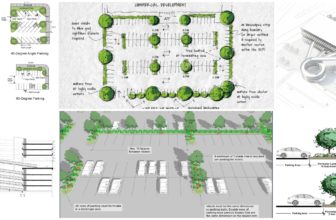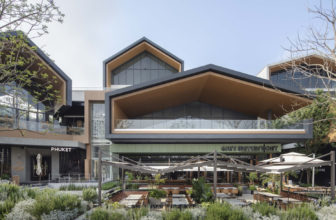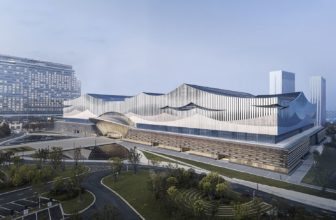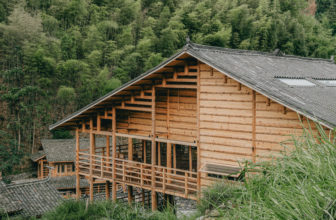The design of staircase is an essential component of a building providing access to different floors and roofs. A staircase consists of a series of steps: a tread (the horizontal part, where the foot will rest) and a riser (the vertical position part).
What is a staircase?
Although it can vary in design, Good staircase designs are vital for multistory buildings, especially low-rise ones, where they could be used alternately with or instead of elevators. Staircases may be a means of vertical circulation and an elegant decorative installation for houses, hotels, shops, libraries, etc. So, what different forms of staircase designs can you fit in your home, shop, or any other facility?
What are the different types of stairs?
Here are 8 different types of stairs. Let’s review them one by one:
1. Straight Stairs
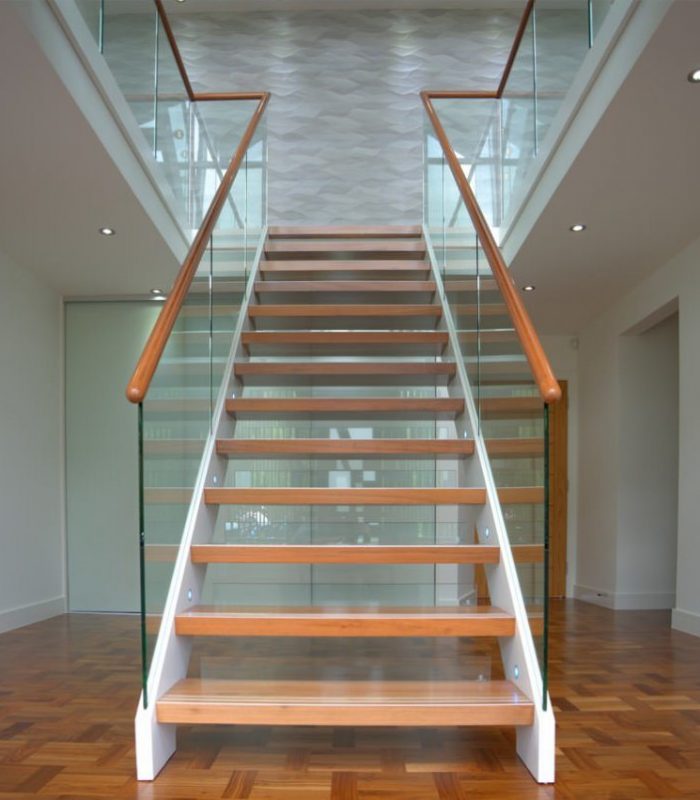
Straight staircase, Steel-Wood – Courtesy of Made-in-China
Straight stairs are the easiest and most essential to design. They do not need further support besides the floor’s support, upstairs and downstairs. However, they require sufficient linear space where they can be placed, and that space could get even longer if a landing is to be added. A landing halfway through would be necessary if the height of the floors exceeds 12 feet (3.6m).
when and where the straight stairs are best suited to be used in practical applications?
Straight stairways are a practical choice for areas with limited space due to their ability to occupy minimal floor space. They are frequently utilized in small commercial buildings, apartments, and residences.
2. L-Shaped Stairs
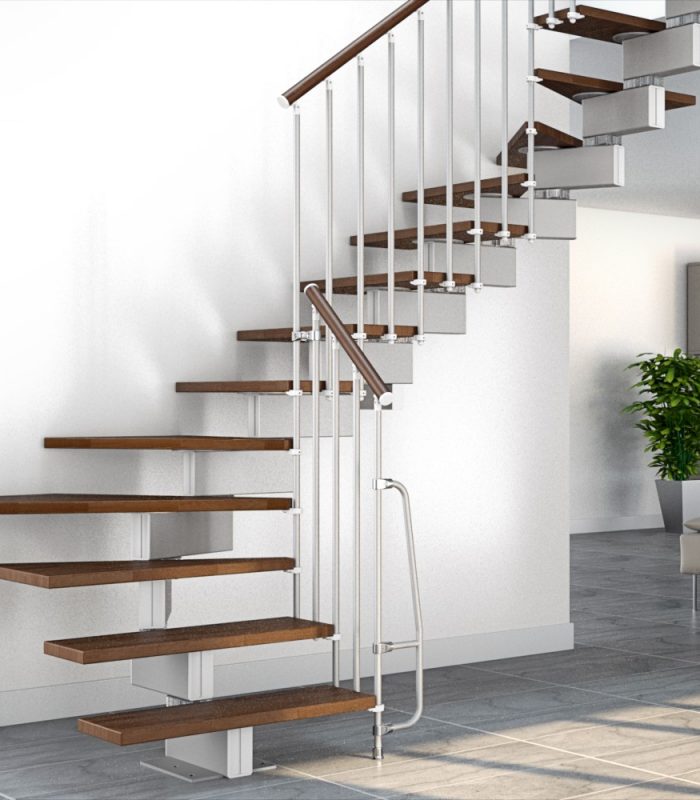
L-Shaped staircase, Steel- Courtesy of The Staircase People
If you rotate the upper portion of your straight stairs, beyond the landing, by 90 degrees, you will get an L-shaped staircase. This type is a bit more complicated, though than straight stairs. For instance, the landing is necessary, and it requires extra support, usually set in the side walls.
L-shaped stairs could be more visually attractive. They are also safer than straight stairs, thanks to the landing, which gives a brief break to the ascendants and reduces the harm of accidental tripping. As to where you can place them, corners would be best. L-Shaped stairs with a landing not exactly midway but closer to the top or bottom floor are called long L-stairs.
when and where the L-shaped stairs are best suited to be used in practical applications?
Staircases with an L-shape are well-suited for areas where a turn is needed, such as in the corner of a room. They are frequently employed in more spacious dwellings, hotels, and commercial buildings.
3. Winder Stairs
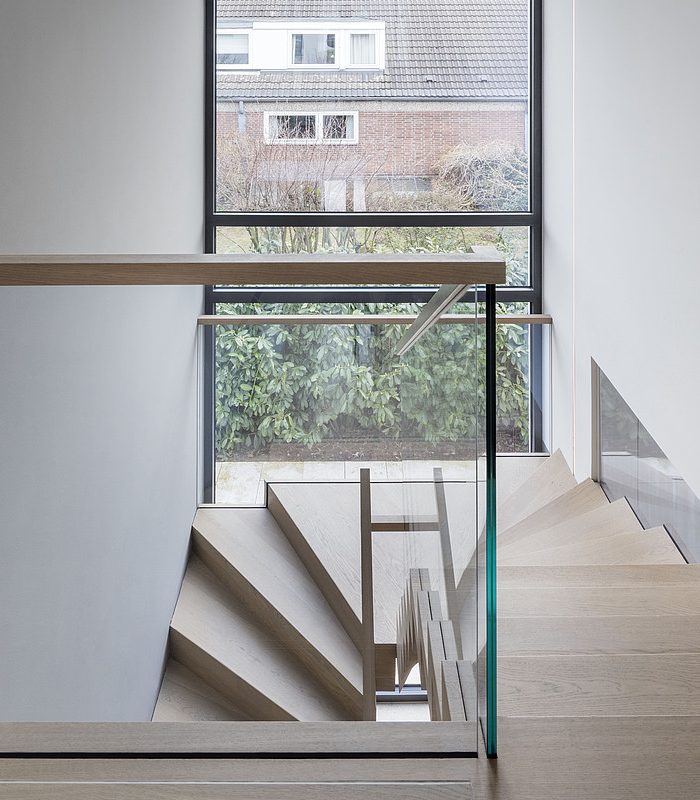
Winder Stairs, Courtesy of stairs-siller
These are L-Shaped stairs with a twist. Instead of the landing, they have 2-3 “winder” stairs linking the upper and lower flights. Winder stairs are broader on one side than the other, primarily to save space. They can usually be triangular or kite-shaped.
Winders give L-shaped stairs a more pleasing impression by gradually and spontaneously linking the upper and lower flights. However, the extra detail makes them more tricky to design and harder to navigate.
4. U-Shaped Stairs
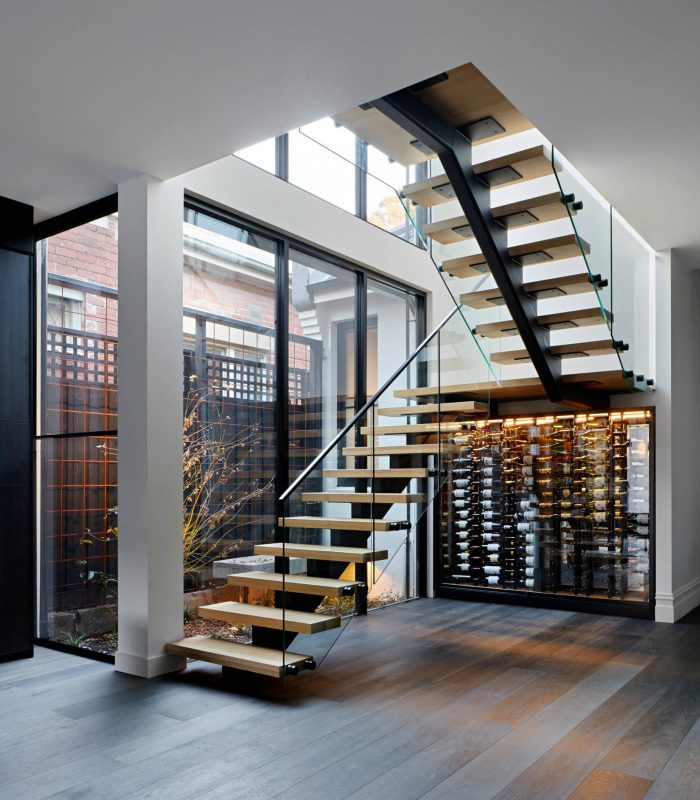
Courtesy of Houzz
Also known as the half-turn staircase, the U-shaped staircase comprises two parallel flights with a landing in between. It is the most commonly used design in office buildings, apartment buildings, public facilities, etc.
If the 180-degree landing is replaced by an extra flight of stairs and two 90-degree landings, the U-shaped stairs become a quarter landing or double L-shaped stead. U-shaped stairs can be easily placed in an architectural plan; however, they require more support than straight stairs.
when and where the U-shaped stairs are best suited to be used in practical applications?
U-shaped staircases are often utilized in spacious areas and can create a grand and impressive entrance. They are frequently found in luxurious residences, upscale hotels, and expansive commercial buildings.
5. Spiral Stairs
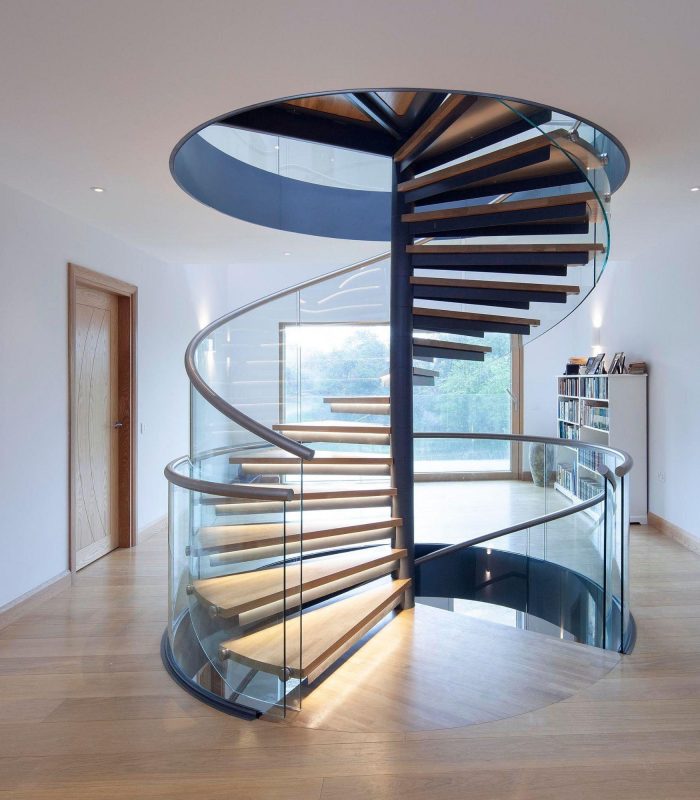
Spiral staircase, Metal- Courtesy of Made-in-China
The steps in this type are wedge-shaped, and they follow the form of a helix. They revolve around a central pole, and when viewed from the top, they seem like a complete circle, where the treads are the sectors of this circle.
Spiral stairs are compact, so they can be used when space is not much on hand. They can also be used for light structures, like beach houses and tree houses. They can be pretty attractive in look and do not require much support, only the central pole and the landing.
when and where the U-shaped stairs are best suited to be used in practical applications?
Spiral staircases are often preferred for compact areas where conventional staircases cannot fit. They are frequently installed in outdoor locations, attics, and lofts.
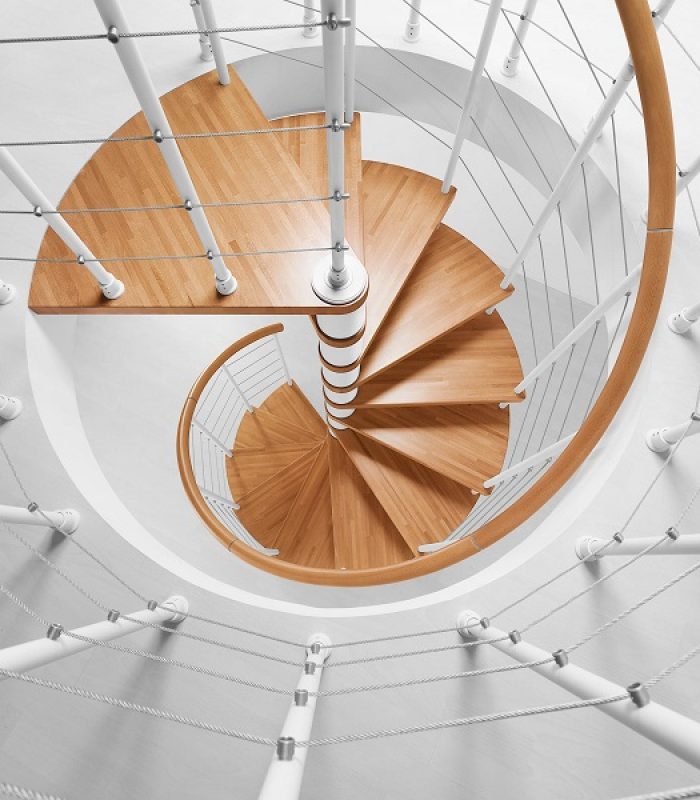
Spiral staircase, Courtesy of kit stair systems
However, spiral stairs are not the safest choice here. The shape and distribution of the steps make it easy to trip on them. That is why they cannot be used as primary staircases, and they cannot also be ascended or descended with heavy objects.
6. Curved Stairs
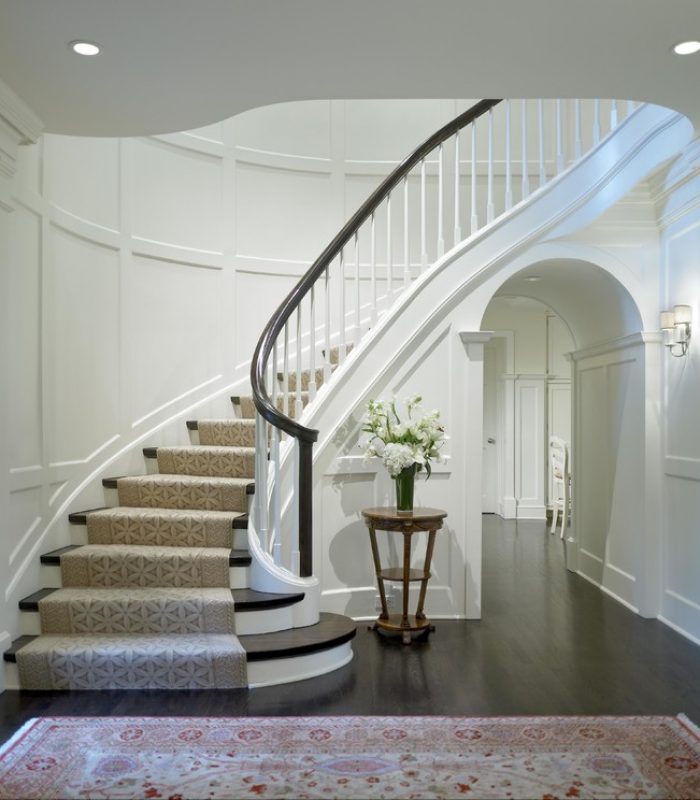
Georgian Rebirth Staircase, Courtesy of Nathan Kirkman
This type is repeatedly mixed up with spiral stairs, and like spiral stairs, it follows a helical path but one with a much bigger radius. So, the steps do not eventually form a complete circle but rather an arc of this circle.
Curved stairs can be pretty graceful, often used to make an impression at mansions or hotels. They are much easier to use than spiral stairs, mainly if the radius is large, but on the other hand, they are more challenging to build. Among all the seven types reviewed here, they can be the trickiest.
when and where the U-shaped stairs are best suited to be used in practical applications?
Staircases with a curved design are suitable for creating a grand and elegant entrance or when a curved shape is necessary for the design. They are frequently utilized in larger homes, hotels, and commercial buildings.
7. Bifurcated Stairs
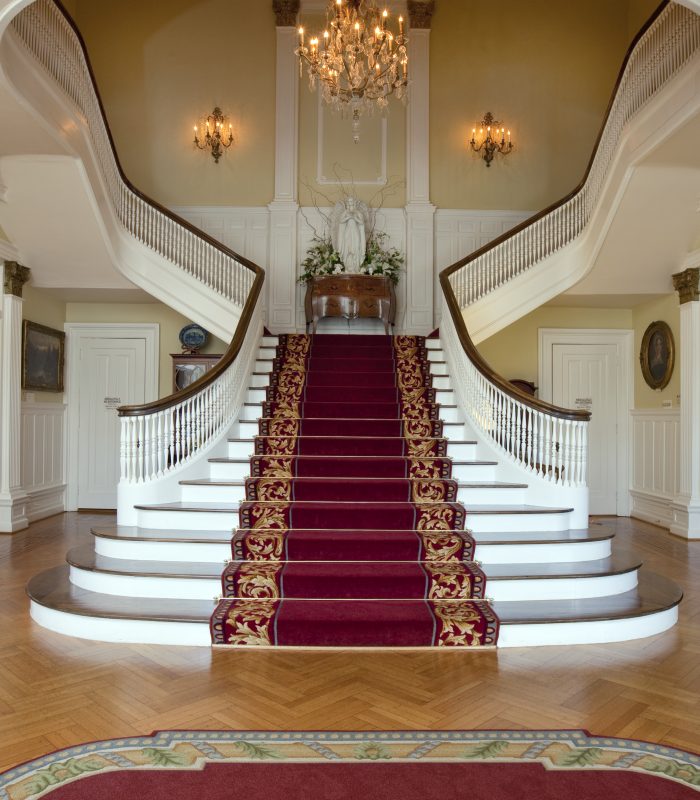
Alabama Governor’s Mansion Staircase Via Carol M. Highsmith
These grand stairs can imply luxury and grace, so they can be commonly used for lavish grand mansions, palaces, or sometimes cruise ships. However, they also have their practical purposes and contemporary finishing.
Bifurcated stairs comprise one broad flight of steps that reaches a landing and then splits into two smaller ones that go in separate directions.
when and where are the Bifurcated Stairsare best suited to be used in practical applications?
Bifurcated stairs are well-suited to spaces where an impressive entrance is needed, but the available floor space is limited. They are often utilized in larger residences, hotels, and commercial buildings with restricted floor space that still necessitate an impressive entrance. Furthermore, bifurcated stairs are ideal for locations that require two separate staircases, such as when there is a need for a staircase leading to two different levels.
8. Ladder Stairs
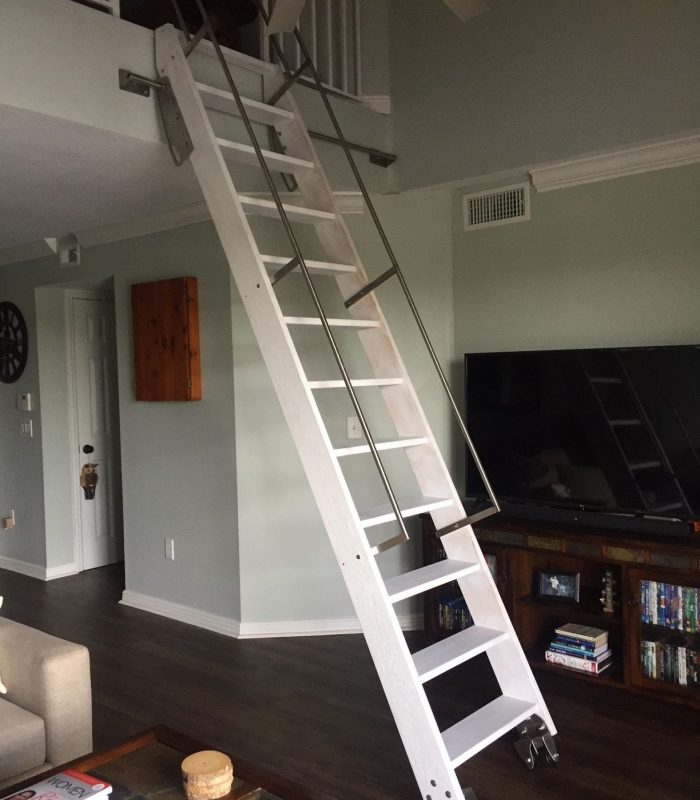
Ladder Staircase, Courtesy of Acadia Stairs
A ladder is an equipment with a series of steps (also called rungs) between two upright lengths of wood or metal. It must be leaned against a wall or other flat surface for support. A ladder is portable, which means it can be moved from one place to another location.
when and where are the ladder Stairs best suited to be used in practical applications?
Ladder stairs are well-suited for areas where a small or cramped space needs to be accessed, such as lofts, attics, and mezzanines. These stairs are frequently found in residential structures where additional living space or storage areas must be reached. Ladder stairs are also utilized in industrial environments to access high shelves or mezzanines in factories or warehouses.


